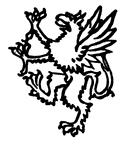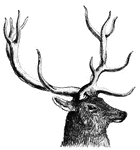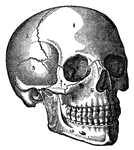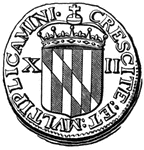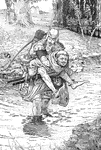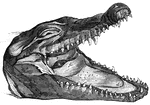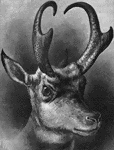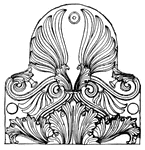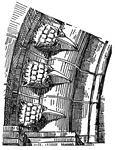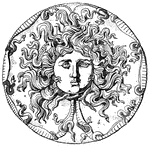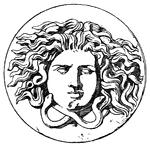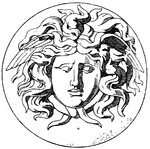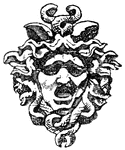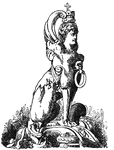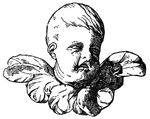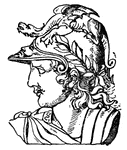
Turkey Vulture
Vultures are carrion eaters. The head and neck are usually bare, and the bill and claws weaker than…

Blue Jay
Blue jays are abundant in the central and eastern states. They are characterized by blue-gray feathers…

Tapeworm
Tapeworms are parasites in the digestive tube of various vertebrates, including man. this is the much…
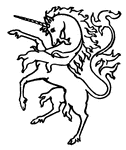
Unicorn
The unicorn is a mythological creature usually depicted as a white horse with a slender horn atop its…

Tape-worm
Tape-worms live parasitically within other animals, and are often spoken of as Entozoa. This is a head…

Cuttlefish
Cephalopods are the most highly organized Molluscs. The head is distinct, carrying two large globular…

Dugong
The dugong is closeley related to the manatee. It has no hind limbs, but its forelimbs are converted…

Catfish
Catfish are found in lakes and streams of North America, usually at muddy bottoms. Catfish have a large…

Roman Military Chariot
A vehicle used for pleasure and war by the early Assyrians, Egyptians, Greeks, and Romans. The vehicle…
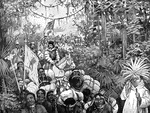
De Soto's March
After sending one or more of his ships back to Cuba with news of his landing, he began marching northward.
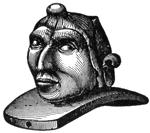
Indian Pipe Shaped as Human Head
Indian pipe in the shape of a human head, used for smoking tobacco.

Battle of Pittsburg Landing
Recapture of artillery by the First Ohio and other regiments under General Rousseau, April 7, 1862.…

General James Shields
In 1861, he was appointed a brigadier general of volunteers and assigned to the command of General Lander's…

Arrival of General McClellan
April 5, 1862. The General is arriving to take personal command of the Federal Army in its advance on…

General John Sedgewick
While directing the placing of some pieces of artillery in position in front of Spottslyvania Courthouse…

Human Brain
Side diagram of the human brain showing which parts of the brain control hearing, speech, vision, legs,…
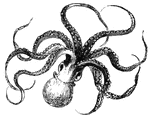
Octopus
Part of the cephalopod group. The name cephalopod is derived from two greek words which mean feet on…

Mexican Terra-Cotta Head
Mexican Terra-Cotta Head sketched in the American Museum of Natural History in New York.
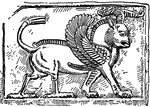
Assyrian Relief Sculpture
The griffin, a monster with a lion's or panther's body and the head and wings of an eagle, played an…
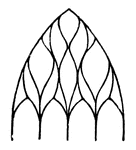
Tracery
Tracery is the intersection in various forms of the mullions in the head of a window or screen.

Tracery
Tracery is the intersection in various forms of the mullions in the head of a window or screen.
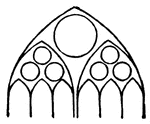
Tracery
Tracery is the intersection in various forms of the mullions in the head of a window or screen.

Tracery
Tracery is the intersection in various forms of the mullions in the head of a window or screen.

Sleepy-Head
Come, let's to bed, says Sleepy-head. Tarry a while, says Slow. Put on the pan, says Greedy Nan, Let's…
!["First and last review of the First Regiment, South Carolina [African American] Volunteers, on Hilton Head, S. C., under Colonel Fessenden, U. S. A., June 25th, 1862. Our correspondent at Hilton Head wrote us: "I witnessed the parade entire, as well as the company drills in the manual of arms, etc., afterward, and I must acknowledge my complete surprise at the discipline and even vim evinced by the sable crowd. Dressed in the regulation uniform of the United States Army, tall and strong men generally speaking, they, considering that the regiment had not been fully armed but about ten days, spoke well for officers and men."" — Frank Leslie, 1896](https://etc.usf.edu/clipart/11000/11043/1stregiment_11043_mth.gif)
First Regiment
"First and last review of the First Regiment, South Carolina [African American] Volunteers, on Hilton…

Battle of Cedar Mountain
"The Confederate batteries shelling the Federal position on the night of the Battle of Cedar Mountain,…

Battle of Winchester
"Battle of Winchester, VA., March 23rd, 1862- decisive bayonet charge of the Federal troops, led by…

Attack at Harrisonburg
"Gallant attack by 150 of the Pennsylvania Bucktails, led by Colonel Kane, upon a portion of General…

Second Naval Battle
"Second naval battle in Hampton Roads- fight between the Federal ironclad Monitor, of two guns,…

Battle at Potomac
"Engagement between the Federal troops and the Confederates on the Virginia side of the Potomac, opposite…
